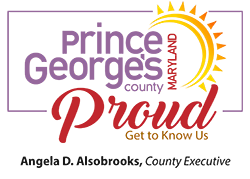
Boil Water Advisory

NEWS ALERT: Boil Water Advisory Issued for Southern Prince George’s County
A Boil Water Advisory has been issued for Southern Prince George’s County due to a water main.
Residents are advised to:
- Boil all tap water for at least one minute before drinking, cooking, or brushing your teeth.
- Use bottled or boiled water for food preparation and hygiene.
- Avoid using untreated tap water until further notice.
Authorities are working to resolve the issue and will provide updates as soon as the water is considered safe. For more information, visit Drinking Water Advisories: An Overview | Water, Sanitation, and Hygiene (WASH)-related Emergencies and Outbreaks | CDC or follow us on all social media platforms @PGCHealth.
Current WSSC Water Updates
The boil water advisory remains in effect. To read the most recent update on boil water advisory, go to: wsscwater.com/bwa.
During the Advisory:
Businesses in the impacted areas that prepare and serve food, and water must shut down until the boil water advisory is lifted, unless those businesses have a separate water filtration system that serves the facilities’ entire water system, or if those businesses have an emergency operation plan that provides an alternative source of potable water.
If you live in the affected area, you should bring your water to a rolling boil for three minutes then cool it before:
- Drinking
- Brushing teeth
- Washing fruits and vegetables
- Preparing baby food and formula
- Making ice
- Giving to pets
- All stored water, drinks or ice made recently should be discarded. Boiled water can be stored in a clean container with a cover. Water does not have to be boiled before it is used for bathing as long as it is not consumed.
- Do not wash food that is to be served raw with water that has not been properly disinfected.
- Disinfect water for the possible presence of harmful bacteria or other harmful microorganisms by one of the following methods:
- Boiling tap water at a rolling boil for a minimum of 1 minute
- Distilling
- Filtering through a reverse osmosis filter, using an “absolute 1 micron” filter
- Sanitize food contact surfaces of equipment, dishes, and utensils by:
- Immersing in hot water of 170 degrees F or higher temperature for at least 30 seconds
- Use of a chemical sanitizer
- Chlorine at a concentration of 50 parts per million with a minimum water temperature of 75 degrees F for a minimum of 7 seconds
- Iodine at a concentration of 12.5-25 parts per million with a minimum water temperature of 75 degrees F for a minimum of 7 seconds.
- Commercial dishwashers that use hot water sanitation of at least 160 degrees F
- Empty all ice machines and ice storage bins and discard the ice. Turn off ice machine so that no new ice is produced.
What to do when the advisory is rescinded?
- Re-start and flush any water-using fixture
- Drain any refill water-holding reservoirs such as the hot water heater.
- Run each water faucet for 1 minute before using the water
- Run drinking water fountains for 1 minute before using the water
- Ice Makers
- Flush the water line to the machine inlet; disconnect the water line from the machine inlet; run 5 gallons of water through the valve and dispose of the water
- Flush the water lines in the machine
- Make ice for 1 hour and dispose of the ice
- Clean and disinfect all parts and surfaces that come in contact with water and ice
Contact the Food Protection Program
If you have any questions, please contact the Food Protection Program at 301-883-7690 during the day or 240-508-5868 (after hours).
